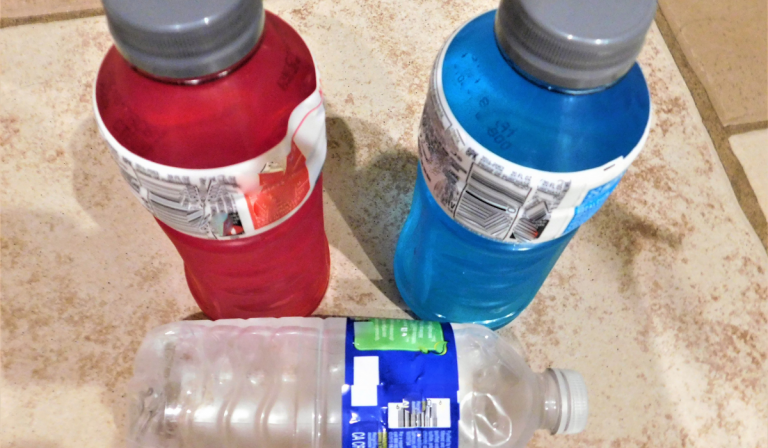Long Slow-Runs: 8 Benefits You Should Know
If your running coach has been encouraging you to take long, slow-runs alongside pacy runs, you must wonder what the hype is about.
Well, you won’t have to wonder anymore.
Below, we discuss eight benefits of long, slow-runs you should know. We also answer some questions you might have about long, slow-runs. So, read on till the end and satisfy your curiosity.

8 Long Slow-Run Benefits
Long, Slow-Runs Reduce Your Chances of Getting Injured
One of the primary benefits of a long, slow-run is injury prevention.
It is common for runners who never run slowly to suffer injuries. But since running for extended periods strengthens muscles and tendons, it can help reduce the chances of you getting injured.
Long, slow-runs allow your bones, ligaments, and joints to adapt to the strain that running puts on them.
Of course, when the said connective tissues become used to the exertion, you are less likely to get injured.
Long, Slow-Runs Can Help You Run More Efficiently
Long, slow-runs can also make your running form more efficient. The longer you run, the more your muscles learn and improve their form, becoming more efficient.
Long Slow-Runs Can Improve Your Endurance
The number of mitochondria in your cells, especially muscle cells, increases with long slow-runs.
Since mitochondria are the energy house of cells, more mitochondria may mean better endurance.
With more mitochondria, your body learns to use oxygen better. Your glycogen reserves also become higher.
Long Slow-Runs Could Help Your Cardio and Breathing

Long slow-runs can also increase the blood volume your heart pumps out with each beat.
Long slow-runs can also help your lung capacity. Since you will take bigger breaths for longer, your chest cavity will open up, allowing you to breathe more air with each breath.
These two changes, in turn, will result in better cardio and respiratory function.
Long Slow-Runs Can Raise Mental Toughness
Once you get used to covering long distances repeatedly, you become more assured that you can always go all the way.
Long slow-runs teach patience. By being patient, your runs can be more calculated.
Long slow-runs also make you a more disciplined runner. It takes a lot of dedication to repeatedly cover long distances slowly.
That dedication can also translate into discipline while running.
Long Slow-Runs Can Help You Handle Physical Discomfort Better
With your muscles and tendons getting stronger, you won’t feel physical discomfort as readily as before.
But beyond that, your mind will have become accustomed to going long distances even when it is not so comfortable. So, if you eventually feel physical discomfort, you can suppress it with your mind.
Long Slow-Runs Helps Your Body Fuel Itself Better
The more long slow-runs you complete, your body will learn to tap from fat reserves before glycogen reserves. This way, glycogen will not deplete readily, and you can keep running for extended periods.
Long Slow-Runs Can Make You Faster

One possible effect of having more substantial muscles, tendons, ligaments, bones, and joints is running faster. Your body can withstand faster speeds as long slow-runs improve your connective tissue.
Besides, you can run faster with improved mitochondria density and better fuel utilization. Rest assured, you won’t get tired quickly.
Also, since your cardio, lung capacity, and respiratory function generally improve with long slow-runs, they can handle higher speeds.
How Many Times Should I Do Long Slow-Runs per Week?
In many cases, people do long runs once per week. Considering how much strain long slow-runs can put on the body, you may need considerable recovery time.
You may even compromise the expected outcomes if you do your long slow-runs too frequently.

How Long Should Long Slow-Runs Be?
Long slow-runs typically last around 45 minutes to 90 minutes.
What Distance Should I Cover in My Long Runs?
According to various experts, your long slow-runs should be around 20% to 30% of your weekly mileage.
So, if you do 20 miles every week, your long run should be 4 miles to 6 miles. If you do 15 miles per week, your long run should be 3 to 4.5 miles per week.

How to Run Slowly over Long Distances
The key is to run at a pace at which you could have a conversation.
By starting at a conversation pace, you give your body the chance to warm up for the more intense part of the long slow-run. Running slowly also helps your body learn to tap from fat and carb stores.
So, ultimately, your body will become more efficient at using body fuel.
Then after around 10 to 15 minutes, you can increase your pace if you want.
Reduce your pace towards the last 5-10 minutes of your long slow-run session – get your heart rate below 100 beats per minute. By doing this, you give your body time to readjust blood circulation.

Tips for Long Slow-Runs
- Run at a slow pace for most of the session. You will overexert yourself if you go fast from start to finish. This may affect the expected outcomes.
- Make the run entertaining. Listen to music or find a friend to run with, or do anything that can make the run fun.
- As we mentioned earlier, one long slow-run session per week is enough. Doing too much will overexert your body and mind.
- If you need a break, walk. You do not necessarily have to run all the way; the goal is how much time you spend moving your legs.
- Break the distance into smaller sections in your mind. When you break the run into sections, it becomes less daunting.
- Apply lubricants like vaseline to body parts prone to chaffing.
- Take the following day off to recover.
- Increase the number of miles you cover gradually. If you start with 2 miles, you may increase it by 0.5-1 mile the following week. Just keep going slowly.
- Let others know when and for how long you’ll run.
- Hydrate as much as you can. Start your day with sufficient water when going for a long slow-run. Then after your run, finish up with water and electrolytes. Hydration can help your body recover faster and better.
- Refuel! At least 1 hour before your run, eat a sufficient amount of carbs. Then 30 minutes after your run, eat a snack packed with protein and carbs. Then after around 90 minutes, eat a balanced meal.







